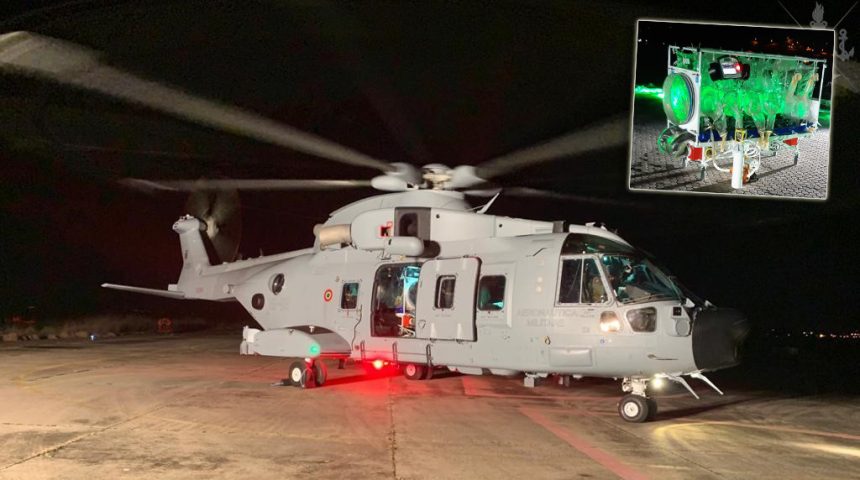The Italian Air Force HH-101 Caesar helicopters are flying Novel Coronavirus Biosafety Containment missions.
As you probably already know by now, since Mar. 10, 2020, Italy is locked down: the Italian government placed the country on lockdown to try and contain the Covid-19 outbreak.
With 9,172 infections and 463 death, Italy has the highest number of confirmed virus cases outside China: the coronavirus outbreak is putting unprecedented strain on the Italian health-care system, with hospitals in the worst-affected areas, in northern Italy, close to the breaking point. In such scenario, patients with coronavirus are moved from a hospital that has no available Intensive Care Units, to others that have room to accommodate them. And the Italian Defense is supporting the handling of infected people.
On the afternoon of Mar. 7, 2020, an Air Force HH-101A helicopter, in SAR (Search and Rescue) alert service at Cervia base, home of the 15th Stormo (Wing), was tasked to transport a 62-year-old patient with coronavirus from Cremona to the Morelli Hospital in Sondalo (Sondrio), on request of Lombardy Regional Emergency and Urgency Agency.
The helicopter, with a medical team on board specialized in bio-containment transport, took off from Cervia shortly after receiving the mission order and reached the Cremona Hospital, where the patient was boarded. The aircraft then took off again for Bormio, for the subsequent transfer to the Morelli Hospital in Sondalo.

This was the first bio-containment mission flown by the HH-101A Caesar helicopter. These multirole helicopters are also able to load and transport special insulated stretchers, A.T.I. (Aircraft Transit Isolator), designed specifically for the air transport in “bio-containment” configuration of highly infectious patients.
As already explained in a recent article:
ATIs (Air Transit Isolators) are boarded for these missions. An ATI is a self-contained isolation facility designed to transport safely a patient during air evacuation, protecting healthcare personnel, air crew and the aircraft from exposure to the infectious agents. The ATI provides a microbiologically secure environment using a multi-layer protection: around the rigid or semi-rigid frame, a PVC “envelop” surrounds the patient while allowing observation and treatment of the patient in isolation and an Air Supply Unit puts the ATI unit under negative pressure, with HEPA Inlet and Outlet filters that filter out 99,97% of particles 0.3mm and larger preventing the passage of potentially infected micro-particles. Four 12V batteries with an operating time of 6 hours each provide the ATI 24 hours independent time.

The Aeronautica Militare is one of the few services around the world able to autonomously carry out biosafey containment missions. The Italians have started developing the bio-containment evacuation capability since 2005, with the purchase of the first ATI systems. Military doctors and nurses attended the training courses of the U.S. Army Institute of Infectious Diseases in Maryland, while the assets used for this peculiar mission were certified by the Centro Sperimentale Volo (Flight Test Wing). The ATI has been certified in extreme conditions after undergoing Rapid decompression, Vibration, Electromagnetic and Environmental Tests and can be carried by the ItAF C-130J, the C-27J, the KC-767A and the HH-101A.
Several bio-containment missions have been flown by the ItAF KC-767 to evacuate the Italian citizens from Wuhan, last month.








